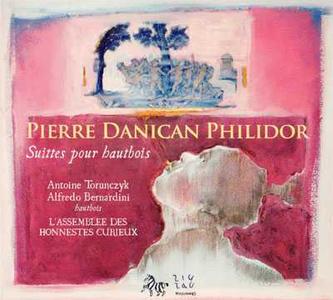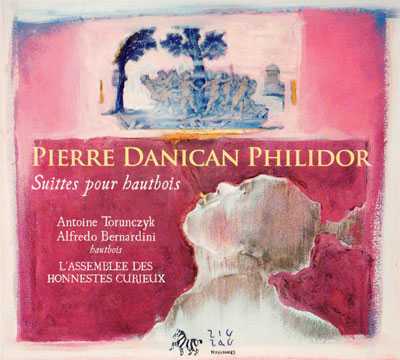Philidor: Suites for Oboes and Continuo / Torunczyck & Bernardini
Baroque | 2008 | 1 CD | 321 Mb | APE+CUE+LOG+SCANS
Baroque | 2008 | 1 CD | 321 Mb | APE+CUE+LOG+SCANS
Pierre Philidor (1681 - 1731) Suites for oboes and continuo Antoine Torunczyck, Alfredo Bernardini, oboes - L'assemblee des honnestes curieux
Pierre Philidor belongs to the illustrious Philidor dynasty of musicians and instrument makers, which began its career playing shawms (regarded as outdoor instruments in the reign of Louis XIII), then moved on to the oboe, which was first admitted by Lully to the Petite Bande of violins and later managed to gain admission to the company of 'noble' instruments (harpsichord, viola da gamba, and so on).
Antoine Torunczyck wants to rehabilitate Pierre Philidor, the grandson of the first generation of makers who transformed the shawm into the oboe around 1660, and son of the Philidor who persuaded Lully to introduce the oboe to the Petite Bande.
'Pierre is perhaps the "Philidor" whom Francois Couperin mentions in the preface of his Concerts Royaux, who played for the old king in the company of Couperin, de Visee, and Marais. . . . In 1714 Louis XIV granted him the same salary as his eminent colleagues, in order to "afford him new tokens of His Majesty's satisfaction with his services". In 1716, just after the king's death, Pierre officially took on the functions of "viol player of the Music of the Chamber"; he was very likely given the title of viol player because there was no official post of Oboe of the Chamber. At this time there were already two other exponents of the viol in the Chamber, who were no slouches at their instrument - Marin Marais and Antoine Forqueray (the latter officially as "flautist"!).
'The first appealing feature of this recording is the rediscovery of a wonderful composer too often confused with the rest of his dynasty. 'Its second attraction is that Alfredo Bernardini has built two "twinned" instruments specially for this recording, making exact copies without changing either the pitch or the tuning (a = 398 Hz). By respecting the original pitch of the instruments, we have given them back their original flexibility and brilliance. 'Finally, just as Pierre Philidor belonged to the third generation of musicians after the adoption of the "new" oboe, I am a member of the third generation of "Baroque" performers. I am therefore touched and proud that two illustrious members of the preceding generations, my teacher Alfredo Bernardini and his teacher Bruce Haynes, have agreed to participate in this project.' Antoine Torunczyk



